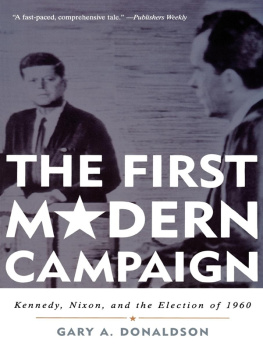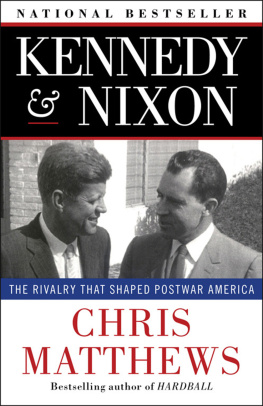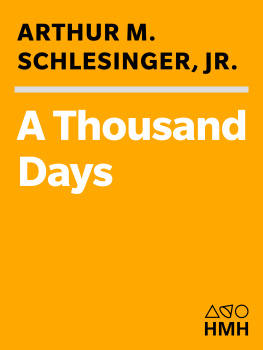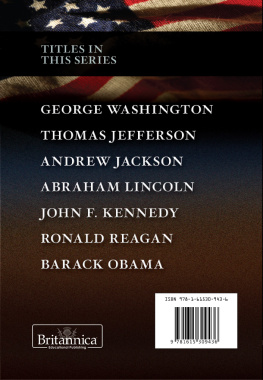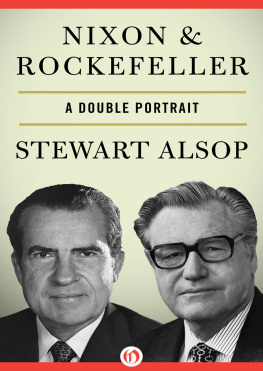
CAMPAIGN OF THE CENTURY
CAMPAIGN OF THE CENTURY

Kennedy, Nixon, and the Election of 1960

Irwin F. Gellman

Published with assistance from the Louis Stern Memorial Fund.
Copyright 2021 by Irwin F. Gellman. All rights reserved.
This book may not be reproduced, in whole or in part, including
illustrations, in any form (beyond that copying permitted by
Sections 107 and 108 of the U.S. Copyright Law and except by
reviewers for the public press), without written permission from the publishers.
Yale University Press books may be purchased in quantity for educational,
business, or promotional use. For information, please e-mail
(U.S. office) or (U.K. office).
Set in Postscript Electra type by Tseng Information Systems, Inc.
Library of Congress Control Number: 2021937557
ISBN 978-0-300-21826-8 (hardcover : alk. paper)
A catalogue record for this book is available from the British Library.
This paper meets the requirements of ANSI/NISO Z39.48-1992 (Permanence of Paper).
To Honor the Memoirs of Three Extraordinary Individuals
Gloria and Robert Seeburger
and Their Daughter and My Wife
Gloria Gae Seeburger Gellman

CONTENTS

PREFACE: THE HISTORY WRITTEN
BY THE WINNERS
In January 1961, as Richard M. Nixons staff began packing up his office and preparing to leave, the vice president still had official duties to perform. The Eighty-seventh Congress opened on Tuesday, January 3, and in his constitutional role as president of the Senate, Nixon had the task of convening that body at noon. He swore in the newly elected senators, announced the resignations of Senators John F. Kennedy of Massachusetts and Lyndon B. Johnson of Texas, and presided over a debate on reducing the number of votes needed to stop a filibuster.
Nixons term, as well as President Dwight Eisenhowers, would expire at noon on January 20, as set forth in the 20th Amendment to the Constitution. On Friday, January 6, Nixon had one other duty to carry out. The Constitution required the vice president to open all Certificates before a joint session of Congress, after which the Votes shall then be counted and the next president declared. The members of the Electoral College had already met in mid-December in each of the fifty states, cast their ballots, and declared Kennedy the winner. The congressional vote counting was a constitutional formality.
The pageantry for the joint session began when two tellers carried the electors ballots into the House chamber. Nixon, walking alone wearing a dark suit and a forced smile, followed them to the rostrum. There the sessions cochair, Texas Democrat Samuel Rayburn, beginning his tenth term as speaker of the House, waited for him and then gaveled the senators and congressmen to order at 12:55 p.m. The vice president placed his arm around Rayburns shoulder and wished him a happy seventy-ninth birthday.
This was a carefully considered gesture. Since 1947, when Congressman Nixon first entered the House, Rayburn had grown to dislike him intensely.
A century earlier, Vice President John Breckinridge, who at thirty-six had been the youngest man ever to become vice president (Nixon, elected at forty, was the second youngest) had lost the presidential race to Abraham LincolnBreckinridges first political defeat. By the time he returned to Washington to serve out the rest of his term, seven southern states had seceded from the Union. Shortly after noon on February 13, 1861, Breckinridge led the senators from their side of the Capitol to the House of Representatives chamber on the other side for the ceremonial counting of electoral votes. Before a silent chamber, the vice president, in an unfaltering voice, as historian James Klotter described it, announced that Lincoln had been duly elected president. He made no other statement but rose and marched his colleagues back to the Senate. It was the first time in American history that a vice president who had been defeated for the presidency formally ratified his rivals victory.
Now this event occurred a second time. Nixon began the electoral count, which would last for more than an hour, by announcing the tally from Alabama: six votes for Senator Harry Byrd, Democrat from Virginia, and five for John Kennedy. The vice president remarked with a grin, The gentleman from Virginia is now in the lead for the Presidency. When the tally was completed, Kennedy had received 303 electoral votes, Nixon 219, and Byrd 15.
Before adjourning the joint session, Nixon, unlike Breckinridge, did not remain silent but asked the speaker for permission to make a brief statement in this unprecedented situation. (Here, Nixon misspoke; he knew of Breckinridges precedent.) He did not mention that a friendly reporter, Earl Mazo, had called his office just before he left for the House chamber, warning that some in the press gallery intended to write unfavorable stories about his conduct at the ceremony and suggesting that Nixon make some conciliatory statement.
Speaking without notes, Nixon declared that his defeat and his opponents victory provided an eloquent example of the stability of our constitutional system and of the proud tradition of the American people of developing, respecting
After the long and tedious count, the chamber erupted with a prolonged ovation. Even Rayburn, who as speaker had never applauded a speech in the House chamber, clapped for Nixons statement. (Nixons gesture would lead to reconciliation between thema fortunate one, because Rayburn would die of cancer less than a year later.) Senator Mike Mansfield, Democrat of Montana, commented: What a way to go... with dignity and with head held high. Senator Hubert Humphrey, Democrat from Minnesota, said that the vice presidents remarks would go down as one of the truly historic messages. It was one filled with humility. It was a gracious and a very thoughtful pronouncement. Time magazine added that Congress and the galleries gave their ovation to a good loser who makes a gracious gesture.
From the Nixon who comes down to us from many historical descriptions, this is the last thing one would expect.
Given the vast number of books and articles that have been written about the election of 1960, it is remarkable how closely most authors views follow Theodore Whites The Making of the President 1960. White established a new approach to writing about elections. His book reads like a novel, presenting an insiders view of how the races evolved from the primaries through election night and beyond. Although many have questioned some of Whites assertions, his overall narrative of the race, of a heroic senator defeating an unscrupulous partisan, has gone largely unchallenged.
White was born in 1915. Raised in near-poverty, he received an exceptional secondary education, won a scholarship to Harvard University in 1934, and graduated summa cum laude in 1938 with a major in Chinese history. The following year, he left for China to serve as a lobbyist for Chiang Kai-sheks regime. Quickly disillusioned with the generalissimos rule, he took a position with
Next page

